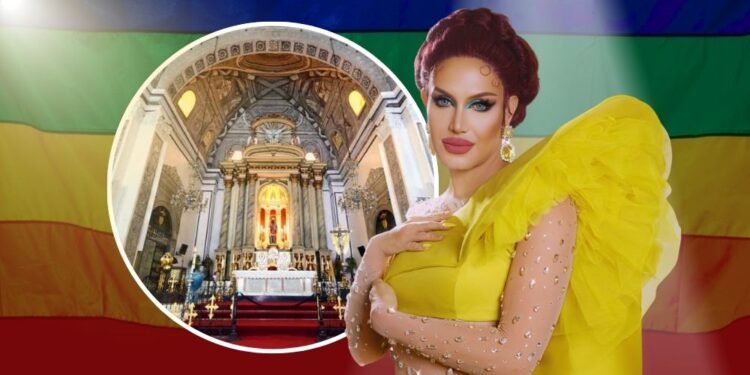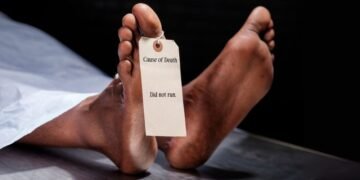Only in the Philippines do rosaries and rhinestones live rent-free under the same roof.
Nearly 79% of Filipinos tick “Catholic” on census forms, yet the same nation screams for drag queens on HBO Go. Bishops say “immorality,” but barangay fiestas still beg bakla to style saints in velvet gowns. The pulpit condemns what the stage crowns. The irony isn’t hidden—it’s literally on prime time, lip-syncing to an OPM ballad.
Catholicism built the stage, it now side-eyes
Spain came in swinging in 1521 with swords, crosses, and sermons. They found babaylan and asog—gender-fluid shamans leading rituals, healing, and spiritual life. Friars branded them “idolatrous” and buried their roles. But Catholicism didn’t exactly erase performance—it doubled down.
Through the Patronato Real, the Church and state fused power, making parishes the new cultural hubs. Enter the fiestas: Santo Niño processions, Simbang Gabi, and the marathon Pasyón chanting. All drenched in spectacle, music, and costumes.
Over time, bakla slid into these productions—conducting choirs, sewing gowns, and choreographing street parades. The Church banned queer shamans, but their great-grandkids ended up running the show anyway.
The Church hands out blessings and bans at the same time
Credit where it’s due: Catholic institutions built schools, hospitals, and even democracy movements. The University of Santo Tomas (1611) and Ateneo de Manila (1859) molded the country’s elite.
The Catholic Bishops’ Conference of the Philippines (CBCP) turned into a political loudspeaker, most famously in 1986 when Cardinal Jaime Sin’s Radio Veritas call helped topple Marcos.
But the same institution pushes back hard on LGBTQ+ protections. The SOGIE Equality Bill—first filed in 2000—still sits in legislative limbo, thanks in part to religious lobbying. CBCP statements warn that the law will ruin “family values.”
On Sundays, priests preach compassion. On weekdays, bishops mobilize against queer rights. It’s an institution that hands out both scholarships and side-eyes.
Drag made its own pulpits in bars and pageants
Meanwhile, queer Filipinos carved their own stages.
By the late ’70s, Miss Gay Philippines was already a spectacle, complete with crowns, gowns, and judges cribbing off Catholic pageantry. The ’80s saw comedy bars like The Library in Malate and later O Bar in Ortigas become drag laboratories.
Then came TV. Eat Bulaga! rolled out Super Sireyna, a trans pageant, while It’s Showtime launched Kalokalike, where impersonators slayed audiences. These shows primed the public for international franchises.
By 2022, the country had its own: Drag Race Philippines, hosted by Paolo Ballesteros, judged by KaladKaren and Jiggly Caliente.
Precious Paula Nicole won season one. Captivating Katkat took season two. Maxie owned season three. A Catholic-majority nation tuned in weekly to watch queens lip-sync their way to superstardom.
Laws crawl, but crowds sprint
Here’s the paradox: culture moves fast, laws crawl.
The SOGIE Bill has been filed, refiled, and stalled for over two decades, making it the longest-running unpassed bill in Congress. Yet drag shows sell out weekly, O Bar packs in hundreds, and millions stream episodes online.
When drag collides with religion, sparks fly. In 2023, performer Pura Luka Vega was arrested for dressing as Christ in a performance. Critics screamed “blasphemy.” Supporters shouted “art.” Vega was acquitted in 2025. The case showed how Catholic imagery fuels drag aesthetics and legal battles at the same time.
Local governments like Quezon City and Cebu have passed anti-discrimination ordinances. So protections exist—but only depending on your zip code. In the meantime, queens take crowns on TV while lawmakers stall in hearings.
Saints march, queens slay
So why does drag thrive here?
Because Filipino Catholicism loves spectacle. It thrives on parades, chants, and grand displays. Drag simply hijacks the same cultural DNA, remixing it with wigs and camp.
One calls it devotion, the other calls it lip-sync, but both are about community and spectacle.
The tension isn’t going away. Catholicism is still the backbone of national identity. Drag is now part of pop culture DNA. They clash, they overlap, and they feed each other.
Saints march on Sundays. Queens slay on Saturdays. Crowds show up for both.
And that, ironically, is what makes the Philippines the most Catholic and the most drag-obsessed country in Asia.











